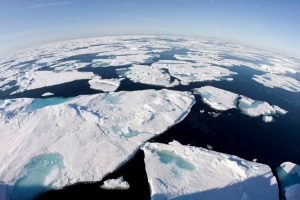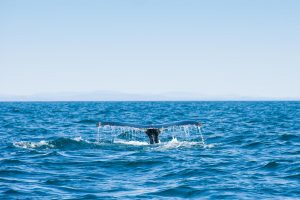From Sea to Sea to Sea, Canada is surrounded by ocean. In fact, our marine exclusive economic zone (200 nautical miles offshore), is roughly the same area as half of Canada’s land mass. With this immense marine territory, you would expect our oceans to be largely protected, yet only 1.3% of Canadian true marine territory is protected and shamefully, only 0.11% of this is effectively protected.

What is Providing Protection for the Ocean?
The primary goal of Canadian marine protected areas (MPAs), by jurisdiction, is to “provide long-term protection of marine biodiversity, ecosystem function and special natural features.” Digging deeper into the legislature of previously appointed MPAs, it becomes unclear of how effective our protection is. The exhausting lists of exceptions below MPA prohibited activities and the ambiguity of phrasing seem to open loop-holes for when social and economic costs become more pressing than protection. For example, the proposed St. Anns Bank MPA states that “The DFO is unaware of any oil or gas development activities planned within or near the designated area for the near future” simply because the returns from oil and natural gas projects in this area are “not currently considered attractive.” With global warming opening up the Arctic Ocean sooner than anticipated and economic stress rising, we question: When in this near future will the oil and natural gas returns in this area become attractive, and will our marine ecosystems be effectively protected?

Credit: Jonathan Hayward/The Canadian Press/Files , Postmedia News
Are We Making Progress?
Canada has fallen far behind other developed countries to reach the Aichi Target 11, which vouched “by 2020, 10% of coastal and marine areas, especially areas of particular importance for biodiversity and ecosystem services, are effectively protected.” The newly proposed MPAs, including St. Anns Bank and the Scott Islands, will help Canada reach this target of 5% by the end of 2017. The benefits of MPAs are clear and sound attractive, preserving natural habitats and species from human pressures. However, there are many social and economic costs of establishing these MPAs. This unravels the debate of whether MPAs are being pushed to complete the Aichi Target 11 for the reasons merely to meet the quota, or to truly protect our oceans.
The Final Question: Quantity or Quality?
To catch up on the Aichi Target 11, the urgency behind marine protection may weigh firstly on the quantity of MPAs. Amanda Vincent, the Honourable conservationist, believes that given the assault we’re effecting on the oceans, it’s critical that we begin by “laying down the premise that we have the right to protect these areas, and the right to exclude certain activities,” and to quickly follow with efficient protection modifications.
Listen to the short interview of Amanda Vincent here.
The key to marine preservation is to reduce the pressures. There is certainly a need to improve our MPA regulations, to ensure that we remove the true human pressures impacting these marine environments. Firstly establishing of new MPAs is exactly what this country needs to open the door in conserving our vast marine biodiversity. By doing so, we ensure the right to further modify until we meet effective protection for marine biodiversity from Sea to Sea to Sea.



 Follow
Follow